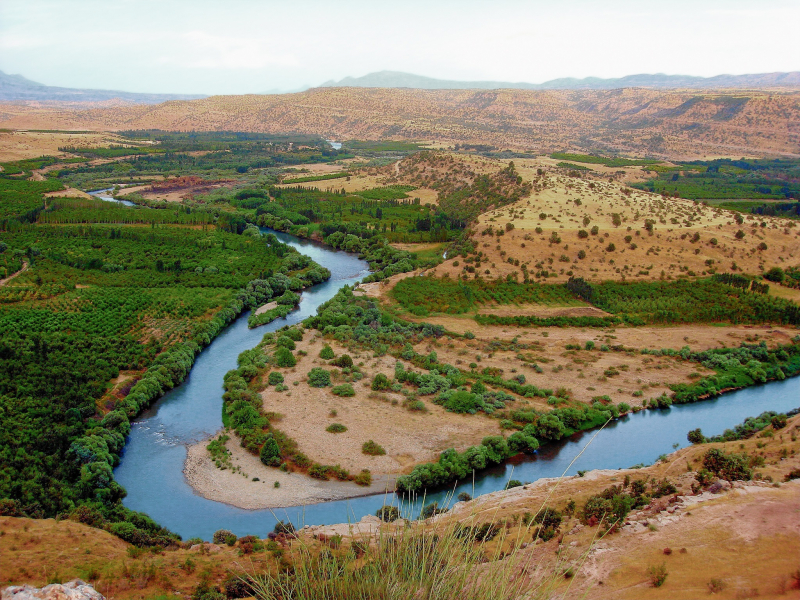Great Zab

Great Zab, also known as Upper Zab, is a 400-kilometer-long river that runs between Turkey and Iraq. It begins in Turkey at Lake Van and flows into Iraq south of Mosul, where it joins the Tigris. The Great Zab's drainage basin comprises around 40,300 square kilometers, and the rivers absorb water from various tributaries along the way. Rainfall and snowmelt are the primary sources of water for the river and its tributaries, which causes discharge to vary greatly throughout the year. On the Great Zab and its tributaries, at least six dams have been proposed, but only one, the Bekhme Dam, has begun construction but was halted following the Gulf War.
The Zagros Mountains have been inhabited since the Lower Palaeolithic, and the archaeological site of Shanidar Cave contains evidence of Neanderthal settlement of the Great Zab basin. From the end of the third millennium BCE onward, historical documents for the region are known. The Great Zab provided water for irrigation for the area surrounding Nimrud's capital city during the Neo-Assyrian period. Near a tributary of the Great Zab, the Battle of the Zab ended the Umayyad Caliphate, and the river's valleys provided refuge for refugees fleeing the Mongol conquest of Iraq. During the 19th and 20th centuries, local Kurdish groups seeking autonomy staged several uprisings in the Great Zab basin.
Length: 249 miles (shared with Turkey)







